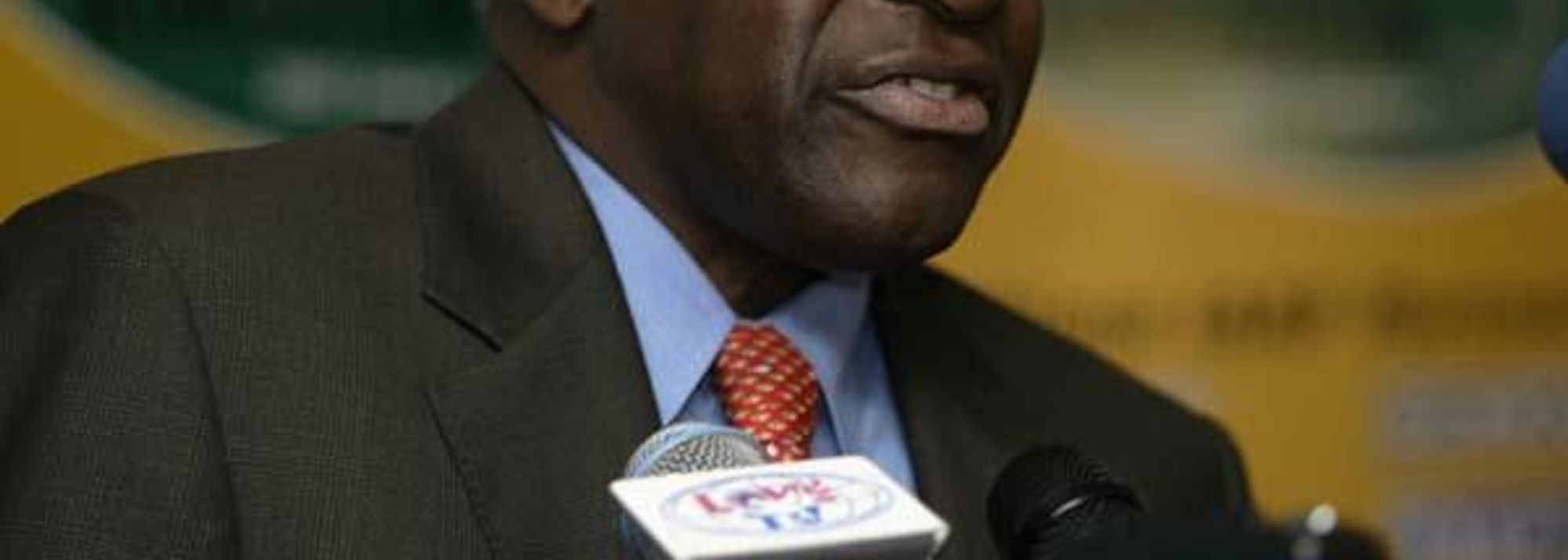President Diack at Grand Prix Final Conference (© Getty Images Allsport)
Official IAAF / LOC Press Conference held at the Hotel Melia Castilla.
Thank you for the introduction, It is a great pleasure for me to be here with you in the great city of Madrid in such distinguished company.
I think it is remarkable to note that this event is the 10th IAAF World Athletic Series event to take place on Spanish soil since 1989, the year that a memorable edition of the World Cup took place in the Montjuic Stadium in Barcelona, three years before a magnificent Olympic Games. It is also significant that all of our sport’s specialities - from Race Walking, Cross Country and Road Running to Indoor Athletics have been catered for as well. Indeed, out of the current IAAF WAS programme – only the World Youth and World Junior Championships HAVE NOT been organised in Spain. Gentlemen – I have given you your next challenge!
But seriously, this level of activity is testimony to the energy and commitment of the Royal Spanish Athletics Federation. And I am not just referring to organisational skill, such as most recently witnessed in Seville in 1999 for the World Championships, but also to Spain’s efforts to develop and promote the sport amongst young athletes.
I should also say that before the recent European Championships, the RFEA Predicted that they would win 18 Medals and, in the end, they won exactly 18! This shows the level of expertise and athletics culture inside the Federation and also shows that while Spain continues to be strong in middle and long distance running, it is also improving standards in many other disciplines as well.
So what is the World Cup?
Quite simply, it is the only IAAF competition which is exclusively for teams and offers the athlete, and the spectator, the chance to see gifted solo players – working hard for their own orchestras – battling for points on behalf of their colleagues. The points range from 9 for first place down to 1.
You will see the representatives of Africa, Americas, Asia, Europe, Oceania, up against single nation teams from USA, Germany, Great Britain (men), Russia (women) and the host nation of Spain in 39 different events.
In 1977, when the first edition of the World Cup took place in Dusseldorf, it was the only IAAF track competition outside of the Olympic Games, which, until 1983, was still being considered as the official IAAF World Championships. Since then, even though the IAAF has greatly developed its programme, the World Cup has held its unique appeal. There is nothing quite like following a team – as soccer fans amongst us will know – but the individual results achieved can also be outstanding. There have been three world records set at the World Cup – Men’s 4x100m relay by the USA in 1977, and two others, the women’s 4x100 mark set by the GDR in 1985 (41.37) and the woman’s 400m mark of 47.60 set by Marita Koch in the same Canberra competition, which are still valid today.
The reigning team champion in the Men’s Competition is Africa, while the US Women will be aiming to defend the title they won in Johannesburg 4 years ago. In Madrid, the timetable has been fixed into two sessions on Friday and Saturday evenings.
Although it is a Team Competition, there is also more than US $3 Million of Prize Money based on place. This ranges from $30,000 for first place to $1,000 for 9th (and $2,000 in the case of the relays)
All details about prize money can be found in the print out which you can pick up as you leave:
Individual events
$30,000
$18,000
$8,000
$7,000
$5,000
$3,000
$2,000
$1,500
$1,000
Relays
$30,000
$20,000
$10,000
$8,000
$6,000
$5,000
$4,000
$3,000
$2,000
The teams from Africa, Asia and Europe were all selected during the recent Area Championships – which for the first time ever this year took place during the same time period. I know from my own experiences that the African and European Championships went extremely well, but our IAAF contacts also reported packed stadiums in Sri Lanka for the Asian Championships, which proves that these events have great potential as showcases for athletics. The IAAF’s aim is to strengthen Area competitions, and make them not only attractive to up-and-coming athletes but also important to the stars as well, because by competing “at home” they are really putting something back into the sport.
Lamine Diack



